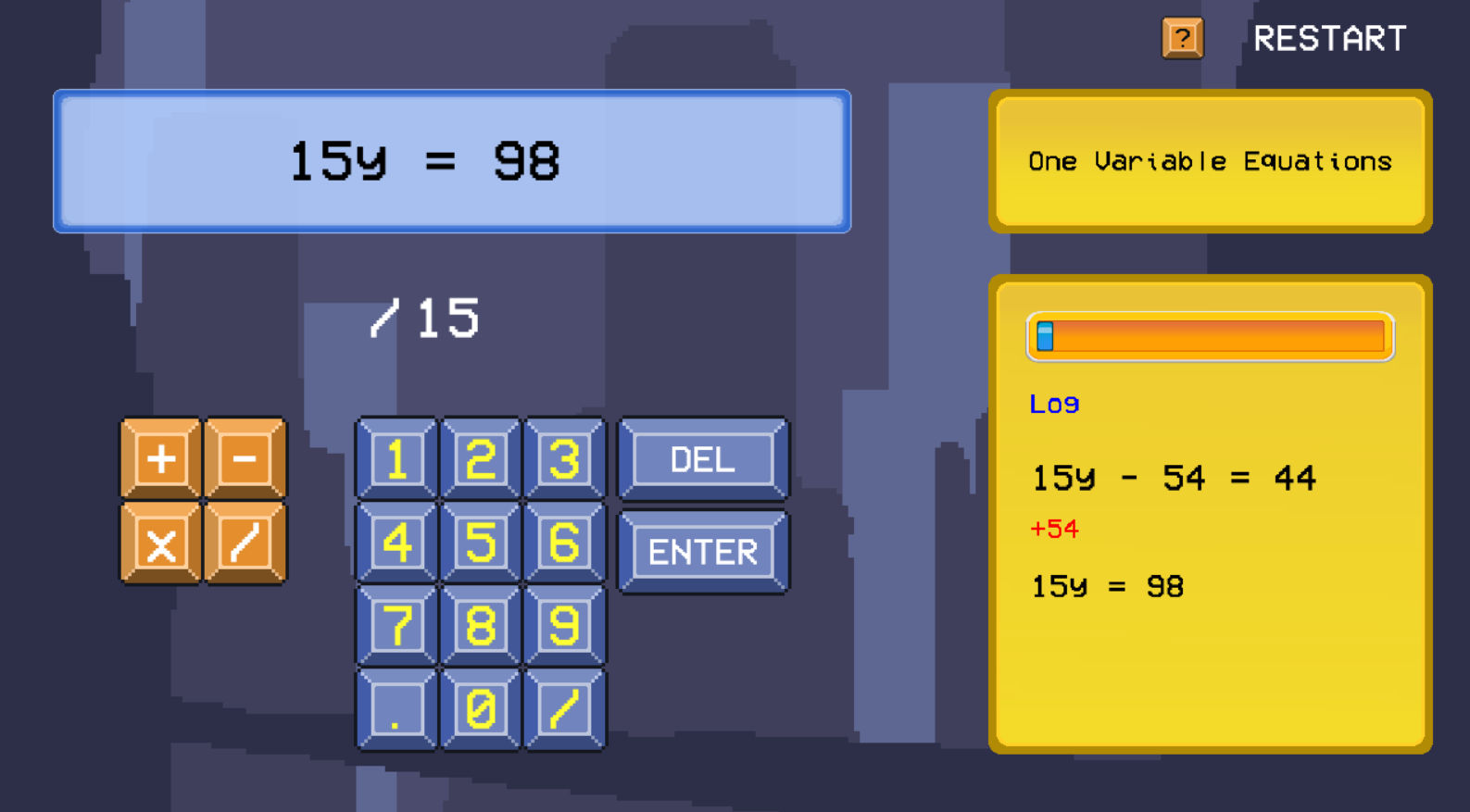Code Breakers
My time as a math tutor made me realize the need for a tool to help students visualize math. To meet this need, I created my own math game that allows students to practice and strengthen their math skills. This project served as a chance to improve my coding abilities since I built everything from the ground up. As the sole programmer and designer, I designed the game structure, created visual assets, and coded the game itself.
Used skills: HTML, CSS, JavaScript, Phaser, Pixel Art
Link to Code Breakers game
Mission
The goal of this project was not to make an addictive video game, but rather to provide an interactive practice tool for young students learning mathematics. As a result, the gameplay is focused on the player inserting the correct math steps rather than the solution.
Gameplay
The game is designed to guide the player through math solving process. The actual calculations are done by the game. The player’s goal is to input the correct math operations to solve an equation (crack the code), NOT to input the final answer. Currently the only game mode is single variable equations, in which player must solve for the value of a variable in a randomly generated problem.
The game accepts inputs with pointer clicks on the input keys displayed on screen instead of keyboard. This was an intentional design choice since many students use tablets.
The log panel on the right hand side of the screen shows the record of mathematical steps taken. Students are encouraged to review this and use it as a part of their studies.
The player inputs the appropriate math operation, not the final solution.
Development
This game was created using JavaScript and the Phaser framework.
Phaser was not completely necessary to accomplish my goals, but it was useful in making this game feel more lively and interactive. I also chose to use this framework because I wanted to learn coding for game development. Visual assets used in the project were all created using Aseprite, the pixel art tool.
Future Steps
What started as a simple idea turned into a mini project that ended up taking few months to complete. I shared this game with some of my students and many found it to be useful in helping them understand the equation solving process. They also shared with me some feedback to improve the game.
This game is far from complete and there is room for so much more. Some ideas for the future include:
Add wider variety of math problems
Support more math operations such as fractions, roots, and exponents
Refactor code to make it more modular and efficient for future updates
Improve visuals



